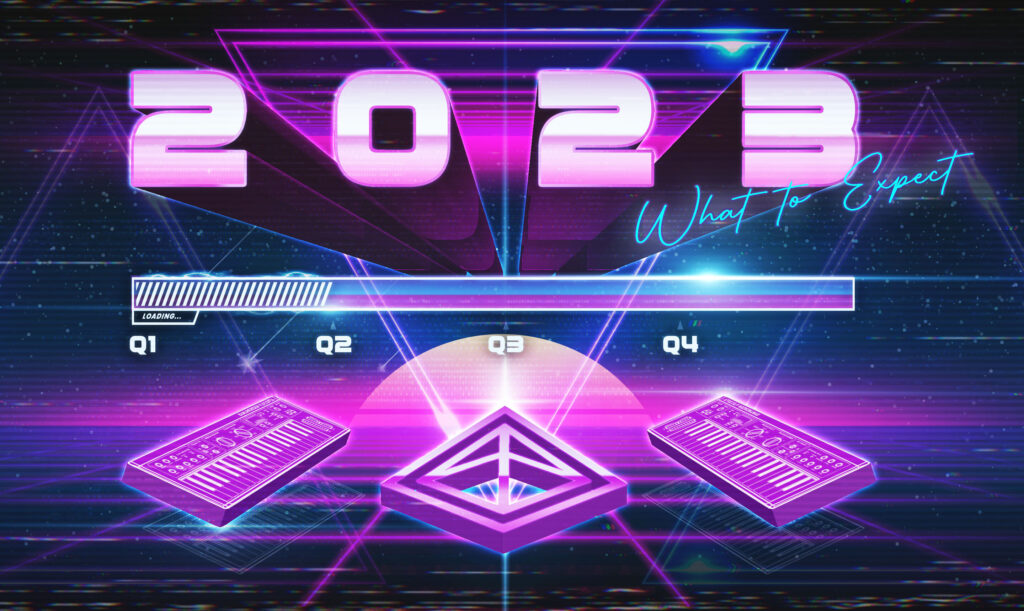
What to Expect from the Concert and Event Promotion Industry in 2023
If 2022 was the year of record inflation and uncertainty in live music and elsewhere, 2023 promises to be the opening act of a complex but promising future. With demand for shows very high and supply chain issues showing signs of easing, the concert and event promotion industry is filled with new opportunities for music professionals. But what’s the best way to compete in an evolving industry that is never going back to the way it was?
Although booking agents and show promoters are still finding their footing, a few trends are illuminating a path forward. With leaner, more efficient management practices and increased flexibility, industry pros can effectively navigate a challenging but rewarding landscape. Here’s what to expect from live music in 2023.
Logistical Concerns are Improving for the Concert and Event Promotion Industry
What we saw in 2022 was a natural rebound from the pandemic, which devastated many live-event operations, accelerated industry trends, and added a fresh layer of complexity. By the second quarter of 2022, ticket sales were up as much as 38% over pre-pandemic levels, pinpointing the intense demand for live shows. Even though actual attendance was somewhat lower, music fans were all in on chasing live experiences after two years of disruption.
But as concertgoers prepared to make up for lost time, the industry was also swamped with concurrent logistical challenges. In some estimates, as many as 50% of regular event staff left the industry and equipment shortages stemming from supply chain issues became widespread.
Although all types of live shows experienced the pinch, music festivals and tours were especially hard hit – at the exact moment that demand was spiking. Grammy-winning artist Jack White even named his 2022 show the “Supply Chain Issues Tour.” For those hoping to spring back to a new sense of normal in 2022, these fresh challenges kept a lid on the party.
Fewer Supply Chain Issues Suggest Reasons for Optimism
Despite the challenges, however, there is reason to believe the worst of the supply-chain crunch is behind us. As we saw in 2022, visibility into suppliers across the global economy was a major problem, with a general lack of transparency creating a never-ending string of bottlenecks.
But the same market experts who identified the problem also suggest that artificial intelligence, better data and management tools will help everyone manage better in 2023. New expectations based on improving visibility and reliability, backed by superior data management, promise to provide a more auspicious outlook for all tiers of the supply chain. For music professionals handling the headaches of equipment shortages, any supply-chain improvement can provide a significant boost.
VIP and Exclusive Access Appear to Be Industry Tentpoles
Amidst the headwinds, one 2022 trend was undeniably positive: ticket demand was red hot. With music fans eager to experience live shows, ticket prices rose substantially, creating a welcomed windfall of revenue after two meager years. Even as music professionals dealt with higher operational costs, the support of music fans lightened the burden.
RELATED: Tips for Setting Growth Goals for Your Agency
But as ticket-price growth begins to stabilize amid cooling inflation, music insiders will be looking for the stickier trends that will likely drive revenue growth into 2023. At the top of that list is certainly the desire of fans to maximize the concert experience. They want better views of the stage, more band access, and experiences that go beyond what concerts offered before the pandemic. Concertgoers are even showing they’re willing to pay more for features like aisle seats as they head back to the stands.
Just as the supply chains will rely more and more on real-time data to improve visibility, the same principle will apply to promoters looking to match the audience to the right experience. Thanks to the availability of real-time ticketing data, the ability to move quickly and respond to trend shifts will be as pivotal as marketing creativity.
Digital Tools Will Likely Play an Even Greater Role in 2023
Exclusivity and VIP access are clearly going to be major components of the reforming music industry. The challenge now becomes how to best capitalize on the trend while reaching the widest possible audience. To handle this while still dealing with ongoing staffing shortages, show promoters need to find a way to analyze data in real time and efficiently utilize the most productive marketing channels.
While it was already clear digital management tools were on the rise before the pandemic, the reality is clearer now than ever; industry professionals simply don’t have the capacity to keep up without tapping into the advantages of automation that can help maintain a cost-effective approach. Being able to seamlessly incorporate real-time data, for instance, can be a thruway to a more efficient operation that will help maximize revenues.
Marketing for a Hybrid Live-Music World with Web3
Concertgoers seem to prefer physically being at a show (often as close as possible), but there is also an undeniable demand for virtual events as well. In this vein, Web3 promises to provide a sustainable and flexible outlet for artists to connect with audiences in any location. As audiences communicate directly with artists themselves, via Web3 channels, expectations for fan engagement are being completely reset.
Simultaneously, this allows promoters to reach out directly to an artist’s most passionate fans. Co-creation NFT models (like John Legend’s OurSong) are able to reach a sizeable number of an artist’s Instagram followers, instantly connecting prominent social media channels with burgeoning new platforms. These also tend to be the fans most likely to seek out VIP experiences either in person or via VR events, allowing promoters to locate an artist’s biggest supporters.
While social media has already played a large role in music marketing for years, it is now shaping up to be the perfect onramp for meeting enhanced fan expectations. In fact, social media continues to help artists break out of their localities. There are more Tiktok stars on tour than ever before, and it’s a trend that will continue to grow.
The Music Industry is Preparing for Multiple Outcomes in 2023
While interest in live music appears to be as strong as ever, the potential of a recession is likely to have the entire concert and event promotion industry slightly on edge throughout 2023. But even though a recession is a distinct possibility, even the most credible market prognosticators are mostly in the dark. We still don’t know whether there will be a mild recession, a more serious one, or whether we can continue the current momentum and avoid a recession altogether.
RELATED: The Event Management Software Features You Need to Get Your Act Together
Agents and promoters who made it through the pandemic and the peak of supply chain issues still have reasons for confidence despite the uncertainty. Equipment shortages should continue to ease alongside improving supply chains; ticket sales remain very strong heading into 2023 despite the potential for a recession; and industry professionals have both in-person and VR concerts at their disposal. Even if in-person ticket sales do stagnate in 2023, fans will likely just turn to more economical ways of connecting with their favorite artists.
To fully maximize the complex but rewarding playing field of today’s live music, agents will be turning to digital platforms to do more with less. Everything from supply chains to ticket sales and marketing will depend on automation that can deliver much more useful data than in previous eras. Dynamic digital platforms built for the rapidly changed (and still changing) music industry are now essential tools as we overcome obstacles on the way to a new normal.
Light at the End of the Tunnel
Although it’s clear that live music still faces large challenges heading into 2023, many aspects have already improved and we should see continued improvement moving forward. A potential recession could certainly cause more headaches, but music professionals are much better equipped to handle the pressure than during Covid-19.
With a better understanding of how supplemental outlets like VR concerts and Web3 can improve an artist’s reach, live music as a whole is poised to grow at a strong clip through 2023 and well beyond.
To see how an all-in-one digital platform built by industry professionals can help you prepare for 2023 with cutting edge organization that will help you navigate upcoming challenges, contact Prism to get started.



